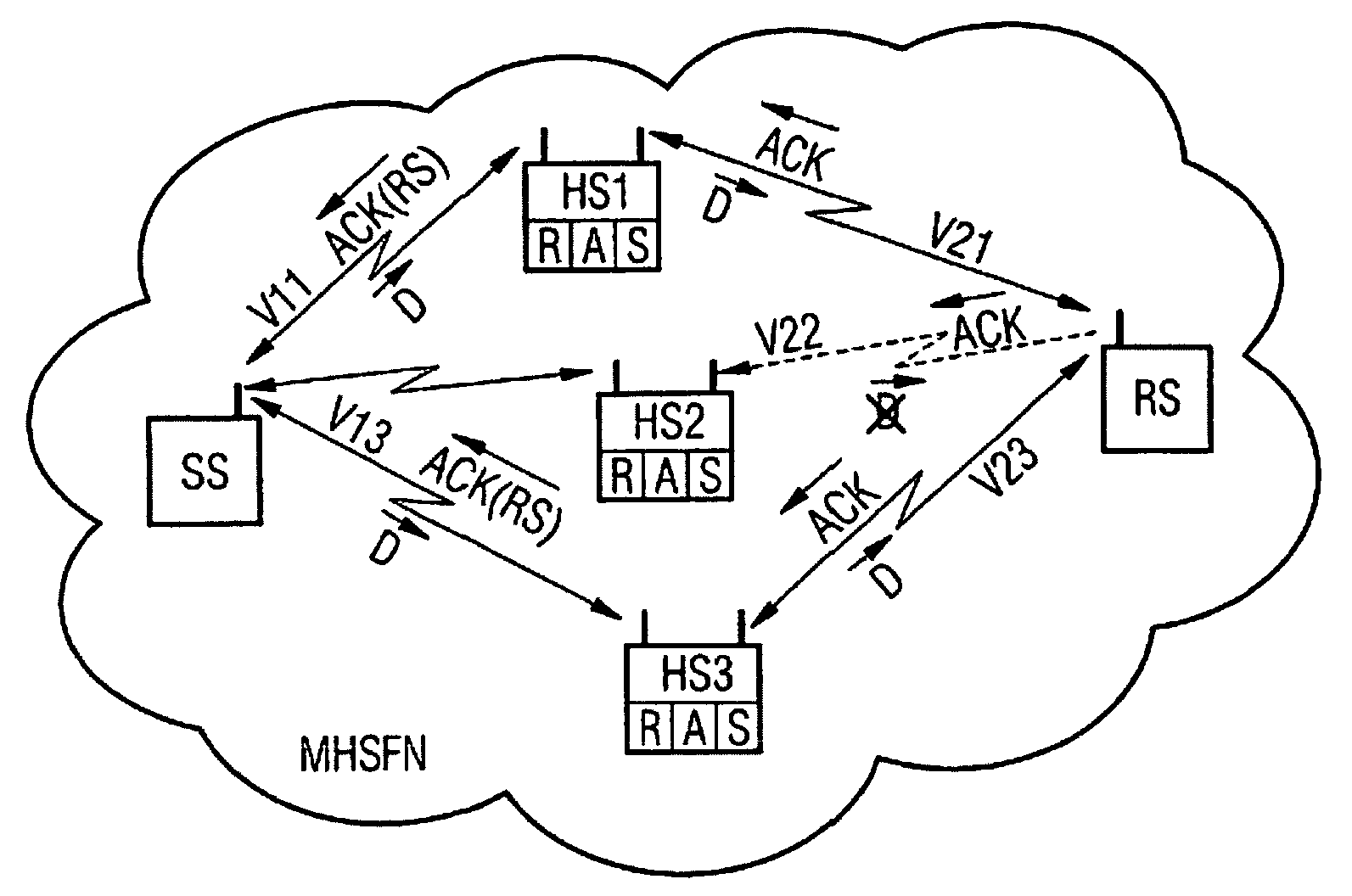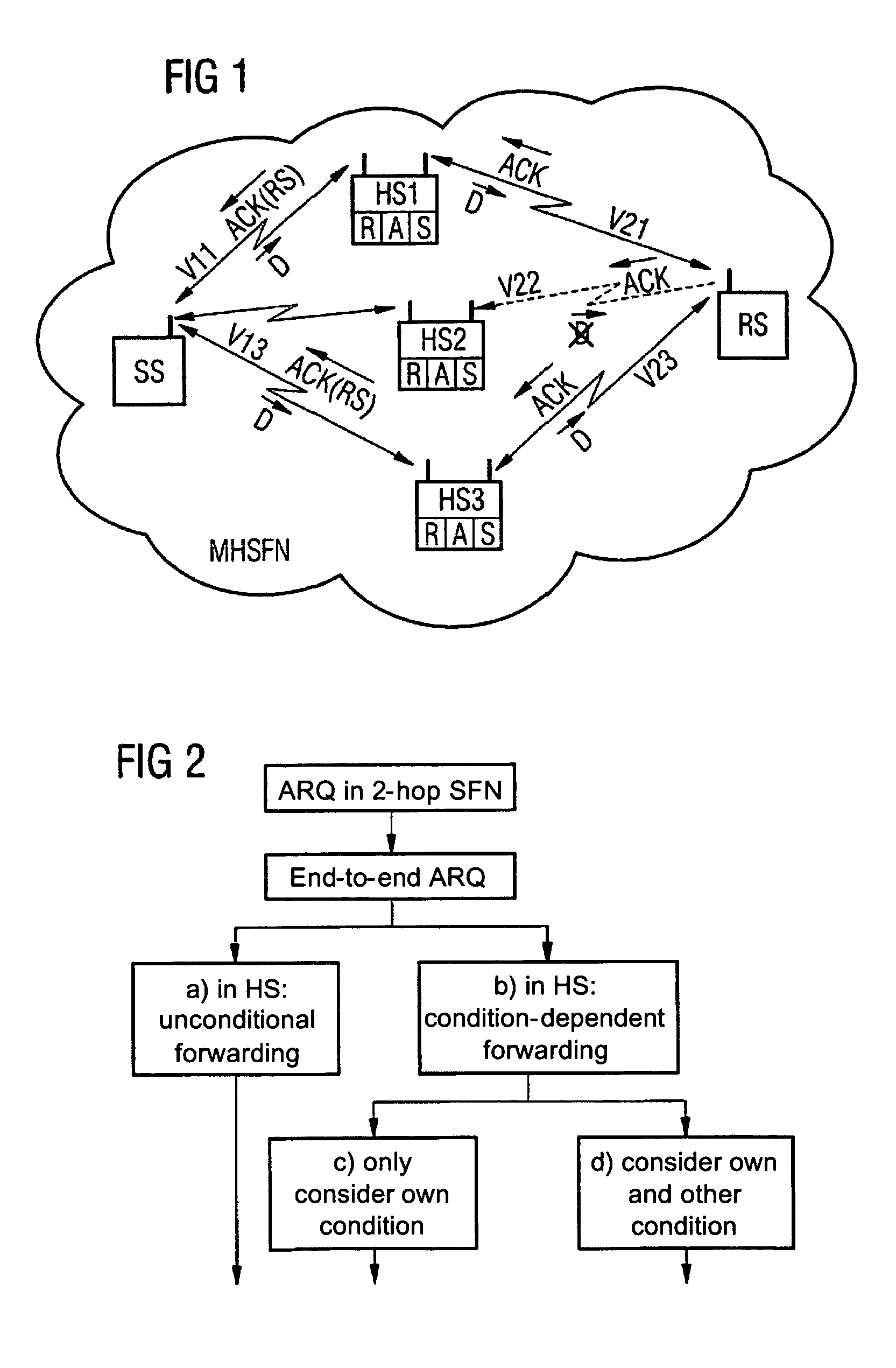Method and communication station for transmitting data
a technology of transmitting data and communication station, which is applied in the field of transmitting data methods and communication stations, can solve the problems of high computing power and time expenditure associated with it, high computing power and time expenditure, and re-sent data packet transmission likewise consumes energy, so as to improve the quality of transmission and improve the quality of reproduction. quality, faster aggregate bit rate, the effect of improving the quality
- Summary
- Abstract
- Description
- Claims
- Application Information
AI Technical Summary
Benefits of technology
Problems solved by technology
Method used
Image
Examples
Embodiment Construction
[0020]Reference will now be made in detail to the preferred embodiments of the present invention, examples of which are illustrated in the accompanying drawings, wherein like reference numerals refer to like elements throughout.
[0021]As can be seen in FIG. 1, an exemplary communication system MHSFN has a multiplicity of mutually communicating stations. Shown as a communication system by way of example is a multi-step or multi-hop (MH) communication system embodied as a single frequency network (SFN). Transmission to other communication systems, in particular to ad-hoc communication systems, is, however, also possible.
[0022]A situation is shown in which a transmitting station SS sends data D to a receiving station RS. The distance between the transmitting station SS and the receiving station RS is here assumed to be too great to allow direct transmission over a direct communication link between the two. The transmitting station SS sends its data D over a multiplicity of communication...
PUM
 Login to View More
Login to View More Abstract
Description
Claims
Application Information
 Login to View More
Login to View More - R&D
- Intellectual Property
- Life Sciences
- Materials
- Tech Scout
- Unparalleled Data Quality
- Higher Quality Content
- 60% Fewer Hallucinations
Browse by: Latest US Patents, China's latest patents, Technical Efficacy Thesaurus, Application Domain, Technology Topic, Popular Technical Reports.
© 2025 PatSnap. All rights reserved.Legal|Privacy policy|Modern Slavery Act Transparency Statement|Sitemap|About US| Contact US: help@patsnap.com



